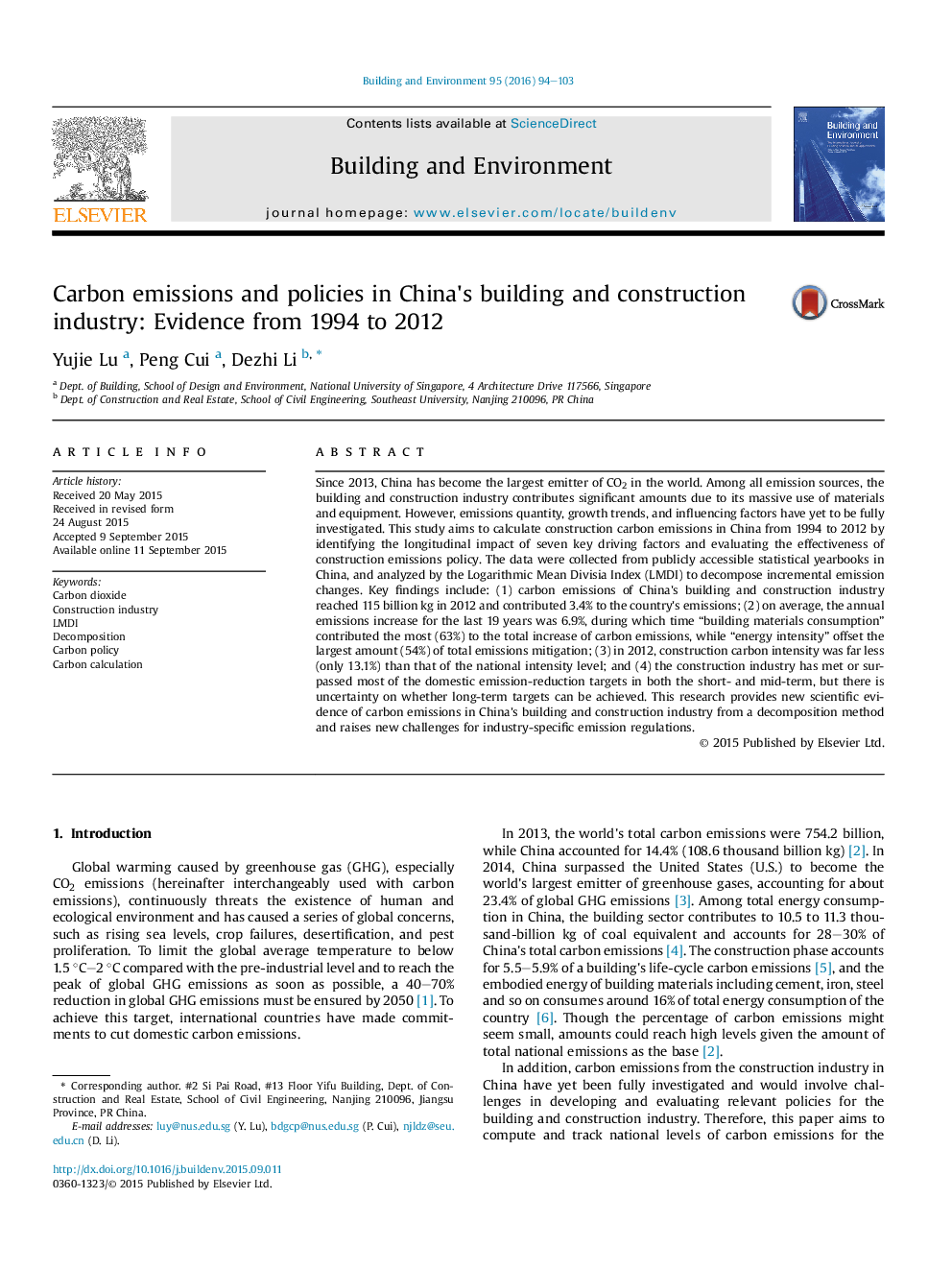| کد مقاله | کد نشریه | سال انتشار | مقاله انگلیسی | نسخه تمام متن |
|---|---|---|---|---|
| 247757 | 502526 | 2016 | 10 صفحه PDF | دانلود رایگان |
• Carbon emissions from China's building and construction industry from 1994 to 2012 was calculated.
• Total construction emissions annually increased by 6.9%, but the emission intensity annually decreased by 4.7%.
• Key influential factors and their quantitative impacts on the changes in emissions are discussed.
• Building materials contributed most to increased emissions, while the energy intensity mitigated the most of emissions.
• The construction industry accomplished or will mostly fulfill reduction targets in both the short- and mid-term periods.
Since 2013, China has become the largest emitter of CO2 in the world. Among all emission sources, the building and construction industry contributes significant amounts due to its massive use of materials and equipment. However, emissions quantity, growth trends, and influencing factors have yet to be fully investigated. This study aims to calculate construction carbon emissions in China from 1994 to 2012 by identifying the longitudinal impact of seven key driving factors and evaluating the effectiveness of construction emissions policy. The data were collected from publicly accessible statistical yearbooks in China, and analyzed by the Logarithmic Mean Divisia Index (LMDI) to decompose incremental emission changes. Key findings include: (1) carbon emissions of China's building and construction industry reached 115 billion kg in 2012 and contributed 3.4% to the country's emissions; (2) on average, the annual emissions increase for the last 19 years was 6.9%, during which time “building materials consumption” contributed the most (63%) to the total increase of carbon emissions, while “energy intensity” offset the largest amount (54%) of total emissions mitigation; (3) in 2012, construction carbon intensity was far less (only 13.1%) than that of the national intensity level; and (4) the construction industry has met or surpassed most of the domestic emission-reduction targets in both the short- and mid-term, but there is uncertainty on whether long-term targets can be achieved. This research provides new scientific evidence of carbon emissions in China's building and construction industry from a decomposition method and raises new challenges for industry-specific emission regulations.
Journal: Building and Environment - Volume 95, January 2016, Pages 94–103
